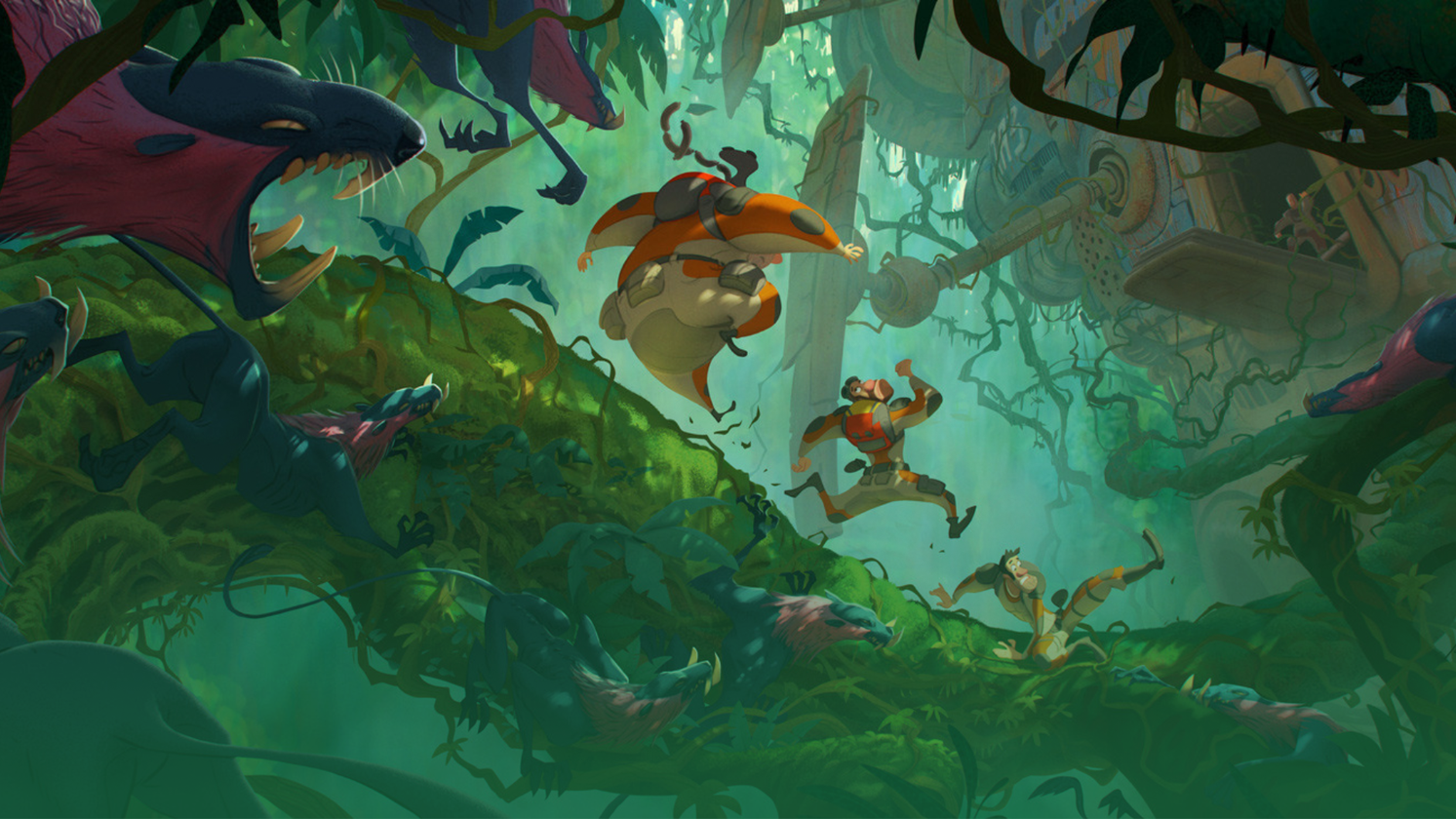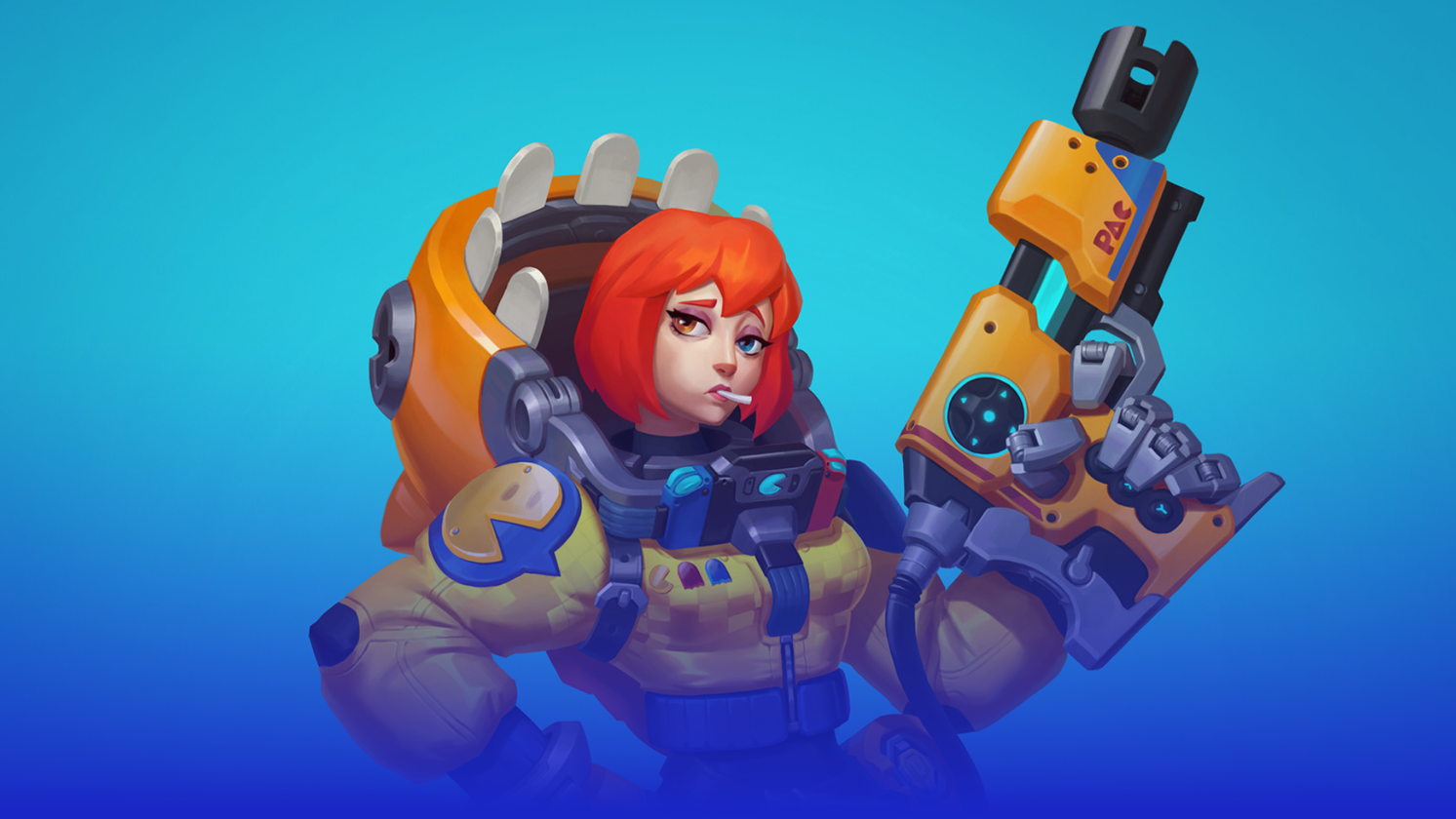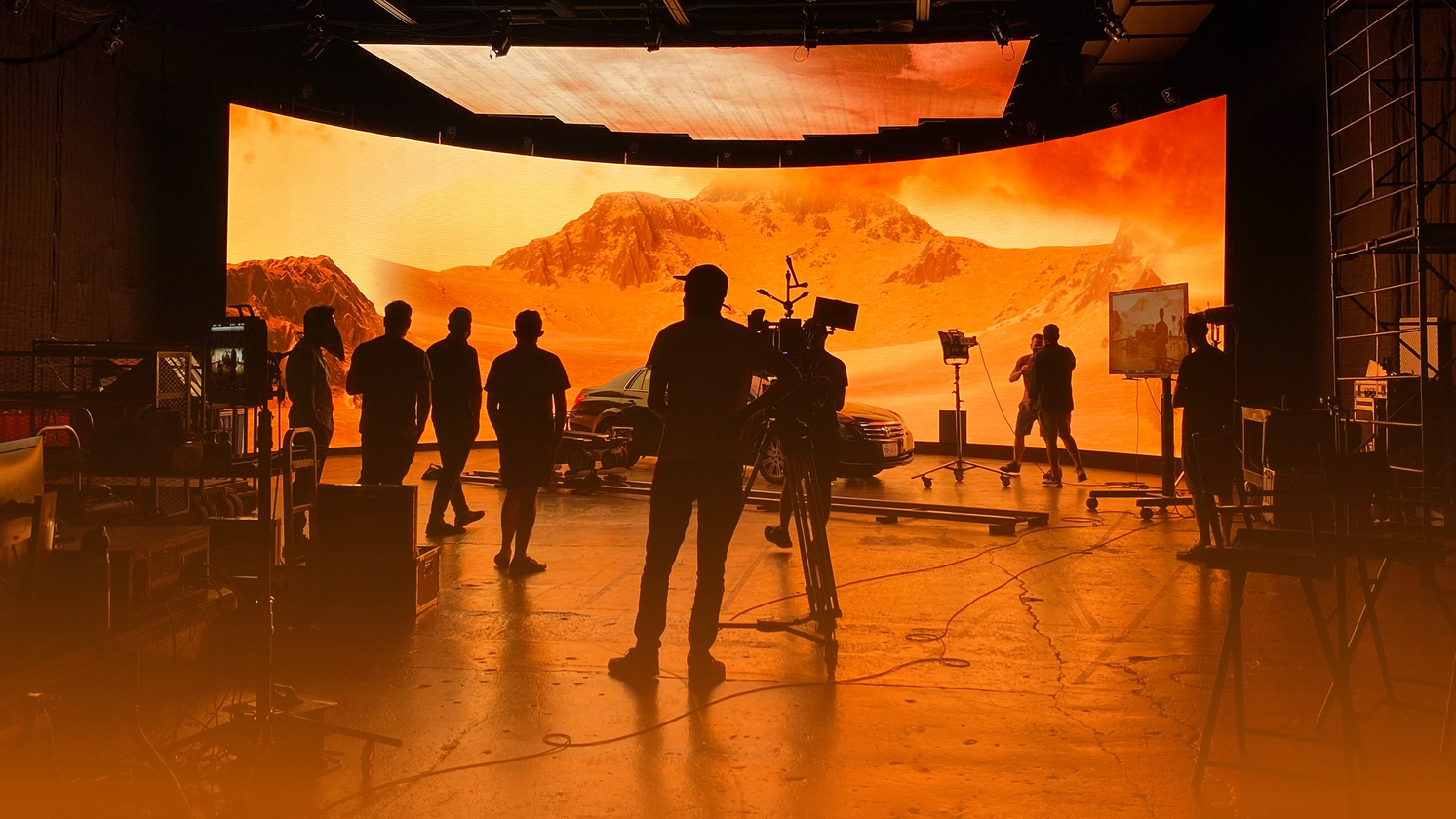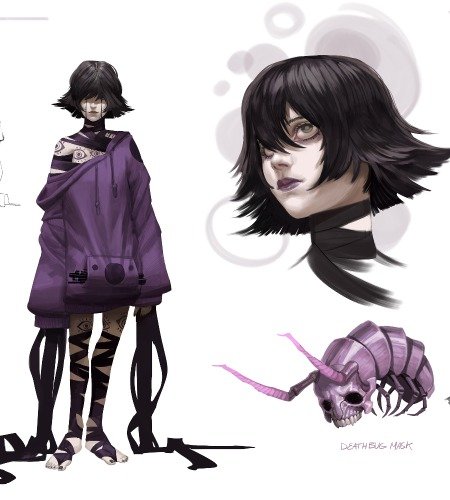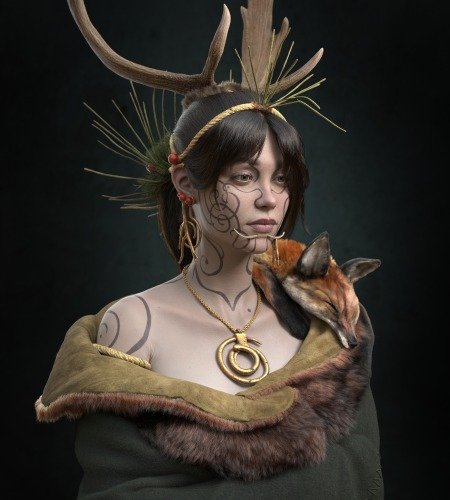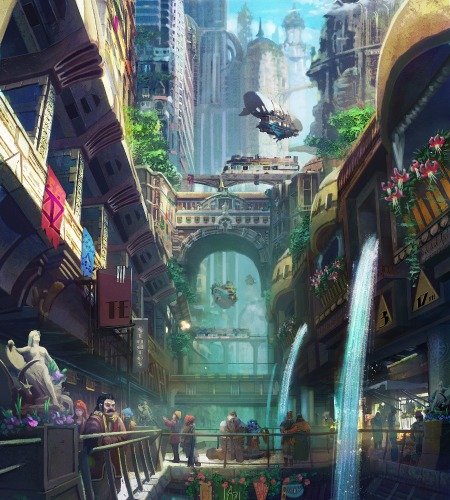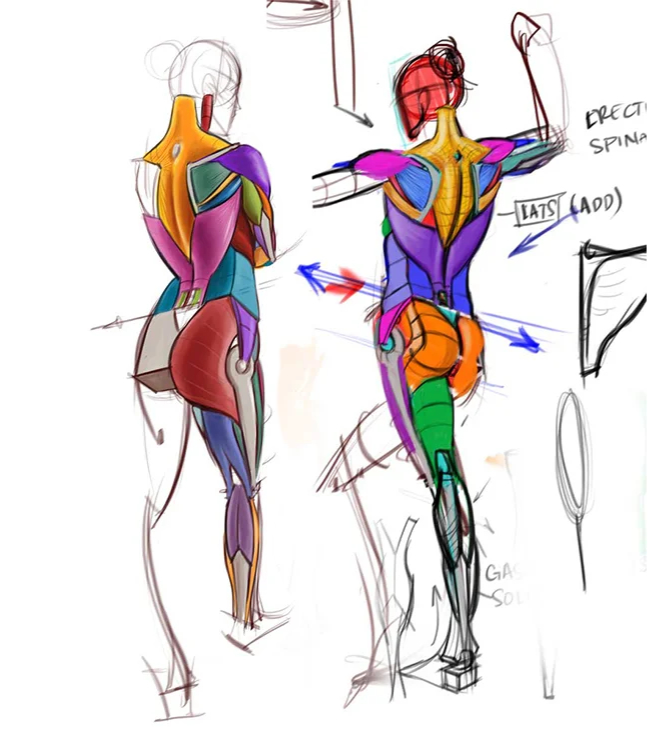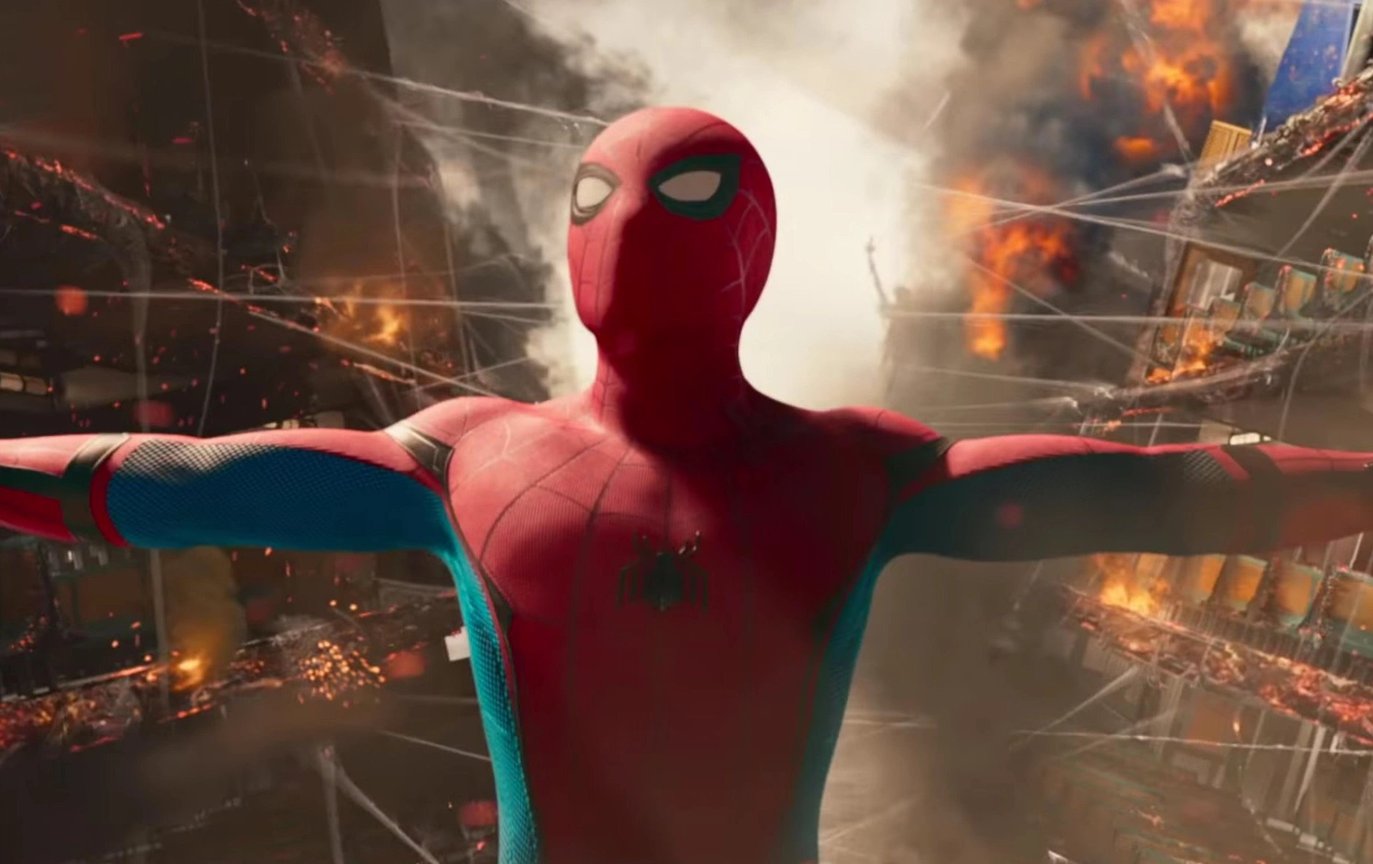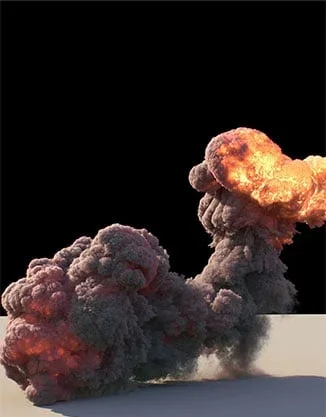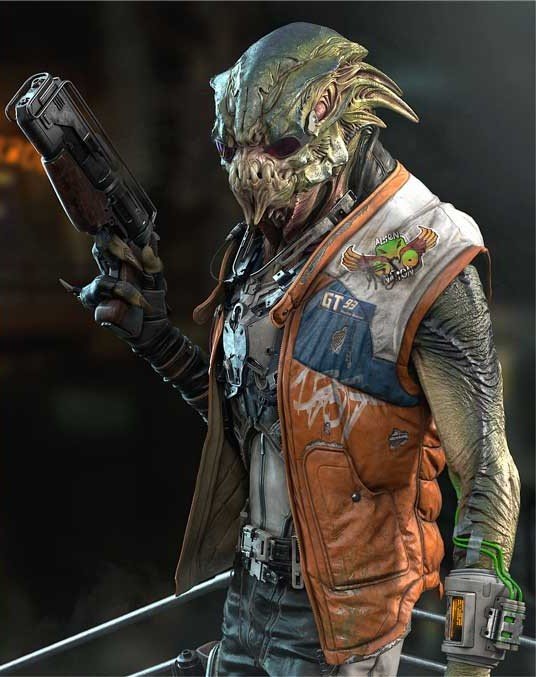A Forest Path
Rhiannon Catton talked about her great environment made in UE4 within CGMA course Vegetation and Plants for Games with Jeremy Huxley: preparing for the course beforehand, creating materials in Substance Designer, sculpting organic elements in ZBrush and more.

Introduction
My name is Rhiannon Catton and I’m currently a Senior Environment Artist at Capcom Vancouver. I graduated from the 3D Art and Animation program at BCIT in 2007 and was hired at Radical Entertainment as a Junior Environment Artist right away. After that, I was at Blue Castle Games/Capcom Vancouver working on Dead Rising 2,3 and 4.
Over the last year, I’ve been specializing in surfacing/material creation with Substance Designer and ZBrush. Prior to that, I was more of an environment art generalist working on everything from level layout, modeling, texturing, collision and bug fixing. Most of my professional work has been with proprietary engines and toolsets, focused on more urban environments primarily. I’ve always wanted to get a better grasp on foliage creation and organic environments. Having a deeper understanding of UE4 has also been a focus of mine recently.
Forest Path: Preparation & Goals
The ‘Forest Path’ is a scene I worked on as part of CGMA‘s 6-week Jeremy Huxley course. I spent a couple of weeks prior to the course beginning to take reference photos in various locations in Vancouver.
My key reference shots came from Stanley Park. I was looking for composition ideas as well as specific materials, shapes, and lighting reference. Some limitations were on my mind as I did this: I only had 6 weeks to complete this scene (evenings and weekends while working full-time) so I knew I had to keep the scene small. Game-wise I was inspired by Horizon Zero Dawn and the Uncharted series for the lush overgrowth, foliage color, and lighting. My reference gathering trip to Stanley Park was taking place in January when it is not so lush, so I had to supplement with web reference from Stanley Park in summer. I lucked out one day and took these shots that became my key inspiration for composition and lighting:

I knew I wouldn’t stick to this ref 100% as there would be weekly assignments that I would follow as well as feedback from Jeremy and the other students. I also knew there would be no time to table flip the scene either so I committed to this idea as much as possible.
My main goals for this scene/course was to work on a natural environment, learn a solid technique for foliage, trees, and rocks and gain more experience in UE4.

Approach to the Scene
My approach to this environment was to be 100% open to what Jeremy taught us and to follow the course outline. I was looking to go outside of my comfort zone with this course and try new ways of working.
My regular way of approaching this scene was:
- Gather as much reference as you can. Take your own photos and spend time in the environment if possible. There is something amazing in seeing the light hit surfaces in real life that’s very hard to get from just web reference.
- Refine this reference. Instructor or Art Director eyes on at this stage really help!
- Block out the scene in the engine. I use proxy meshes created in Maya for large elements such as rocks, trees, and ground. Getting basic composition and lighting in early gives me a sense of what I need to build and what will need the most polish. Also getting more feedback at this stage makes it easier to make changes.
This was my first block out for the course using early iterations of plants, trees, and rocks:


Sometimes in a production of the environment, a lot of what comes next is based on time. Do I have time to sculpt this element? Do I have time to build my material sets in Substance Designer? I was excited to see how Jeremy would approach it in the given 6-week time frame.
Vegetation
All of the foliage in this scene is sculpted and polypainted in ZBrush with the exception of the tree trunk which I did in Maya. During many of the weekly classes, Jeremy would demo his technique in ZBrush which was incredibly helpful. I started from a sphere and dynameshed in the large forms. For medium to smaller forms, I used a variety of brushes and deformation. The new transform tool in ZBrush R8 made it so much easier for me to lay out all the leaves and branches.
I used polypaint to rough in the base color. When possible I used scan reference such as textures.com 3d scan thumbnails to color pick. This gave me a nice base for any detailed texture work I would do later on. Using this base and the normal map from ZBrush I created the AO, height and roughness maps in Substance Designer. As the plants came into the scene I saw I needed to tweak the hue/saturation on some – that was done in Designer and a bit in UE4.
Here are some ZBrush sculpts from earlier on in the course:

And some texture sheets:

I went a little heavy with the polycount on the alpha cards for the ferns and branches to get some nice bending. These were used close to the camera.
It was nice not to worry too much about that for this scene!

I used the Two-Sided Foliage shading model in UE4 for all leaf/fern materials. I ended up creating subsurface color maps in Designer to make sure only the leafy parts of the textures were affected.
Rocks
I wanted to use one rock for the whole scene which meant I had to think about scaling and rotation. I had to make the rock with an interesting silhouette from many angles. I also had to use a detail map so I wouldn’t lose texel density as I scaled it. To begin I sculpted some large shapes in ZBrush. It took a few tries to find a shape that would work for me. I started to chisel in some med detail, keeping in mind I wanted some crevices for moss to settle in. I didn’t sculpt in any smaller detail as my tiling detail map should take care of that.

Sculpt in ZBrush
I then created a low res version with the quad draw in Maya, UVed and took this to Substance Painter for baking. I decided to add some rough color values in Painter as well: a slight green tint in some of the crevices for moss and some color variation over the whole rock. This was done with color fill layers and smart masks. I didn’t spend too much time on that as I wasn’t sure how much this would read under the detail map.

Next was my detail map which I built in Substance Designer:

I did a lot of experimenting with how this tiling detail worked over the base rock. I am very new to UE4 Material Editor so this was a bit of a challenge. I tried adding some moss with WorldAlignedBlend (moss would appear top down no matter how I rotated the rock in the scene as well as the tiling detail map. I got the rock to a certain point and thought I had better move on to the many other things I had to do for the week’s assignment. I put this on the ‘to-work-on’ list for the end of the class.
As the scene progressed I ended up covering these rocks pretty heavily with ferns and weeds so I left the rock as it was. This is one of those things I know I will come back to after having more experience with UE4 Material Editor!

Materials
I did all of my tiled materials in Substance Designer. I can’t describe how much I love this program! I started using it about a year ago and it was a bit intimidating at first. I quickly realized the power it gave me to iterate and build exactly what I want to build and studied many tutorials, basically anything I could find. But it wasn’t until I did the Materials Mentorship with Josh Lynch that I really clicked with Designer.
I’m still learning every day: from co-workers, online tutorials and by opening the graphs that people put up on Gumroad etc.
Here are some of the materials in the scene:
I have some basic guidelines I follow when working with Substance:
- Height map first. I aim to get a solid read of the material here. I start with large forms and work my way to smaller detail as I move through the graph.
- Roughness map next. This map is so important for surface read. I use the height map to get a basic material separation. There are many fine details that are not in the height or normal map that I will add. Surface scratches, scuffs etc. can make all the difference so I spend a lot of effort here. At this point, I will probably take the material into the engine and review it. If it’s reading as the right material then I will go on to the base color.
When I first started using Substance Designer I rushed right into the gradient map/picker. I learned valuable lessons from many artists on how to build the base color slowly. I now start with uniform color and then slowly bring in controlled gradients based on specific shapes. Also whenever possible get color samples from scan data.
Lighting
I had no prior experience lighting in UE4 beyond throwing a directional light in the scene when I started this course so I knew I had a lot to learn. Jeremy showed us a lighting set up from scratch. We used a basic sky sphere, directional light, skylight, and exponential height fog to start. He showed us some of the parameters in each as well as Post Process Volume set up and LUT table creation. This was incredibly helpful to me coming into this with no experience. I was able to get a working set up quite quickly but I spent days trying out different things and watching tutorials. I know it’s just the tip of the iceberg but that basic information got me really interested in continuing my education with lighting. Here is my scene progression from start to current state:

Feedback: CGMA Experience
Jeremy did an awesome job teaching this class. It looked like all the students had varying levels of experience and abilities. He was able to be encouraging to all of us while also providing useful feedback and new techniques. Seeing other students work and progression was very inspiring to me.
Personally, I learned a lot about UE4 as I mentioned above. I also found Jeremy’s ZBrush demos to be very helpful, I tried all the techniques he showed us and it has really improved my organic sculpting in a few short weeks.
This was my first course I signed up for on CGMA. I had a great experience and I am looking forward to the next class that I start at the end of April – Texturing and Shading for Games. Time to explore the UE4 Material Editor!
Thank you for inviting me to do this interview. I always find helpful and inspirational articles on 80 Level so it’s amazing to be a part of it.
Feedback: Challenges
One of the challenges for me was time management and leaving certain assets to work on ‘later’. We had weekly assignments to complete that would keep us on track to finish our scenes. I gave myself the personal goal of posting on Artstation a week after the course wrapped up. That week gave me time to address any feedback Jeremy gave me as well as some input from some co-workers. It also stopped me from redoing and redoing again until I just never posted. There are definitely some improvements I would still like to make but having that hard deadline made me pick my battles.
Another challenge was being a bit of a beginner when it comes to the material editor and lighting in UE4. Jeremy did a great job of teaching the basics and demonstrating the possibilities of the engine. I feel like I have a strong foundation now and I look forward to diving into these areas.


